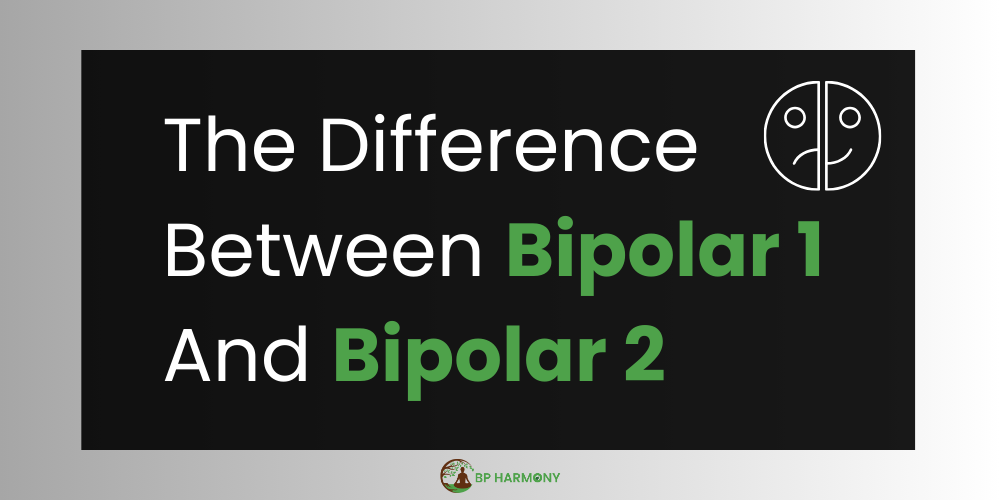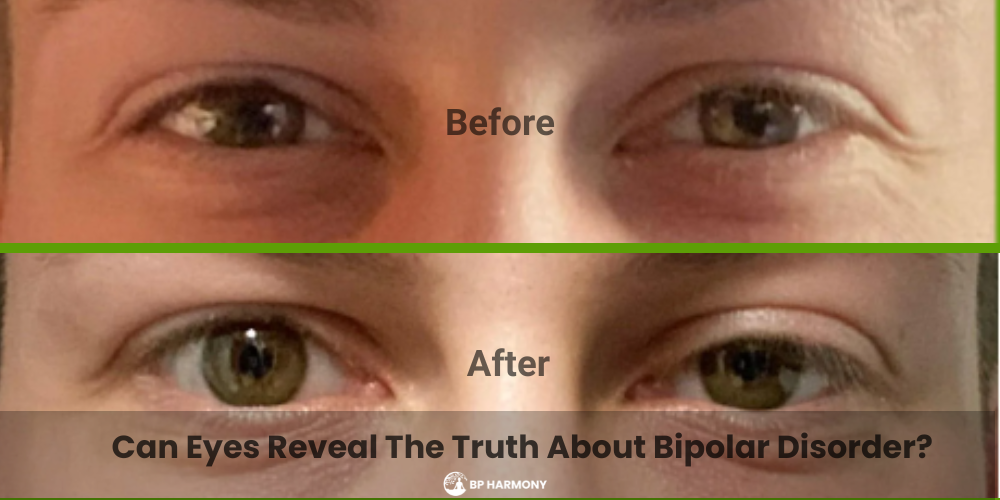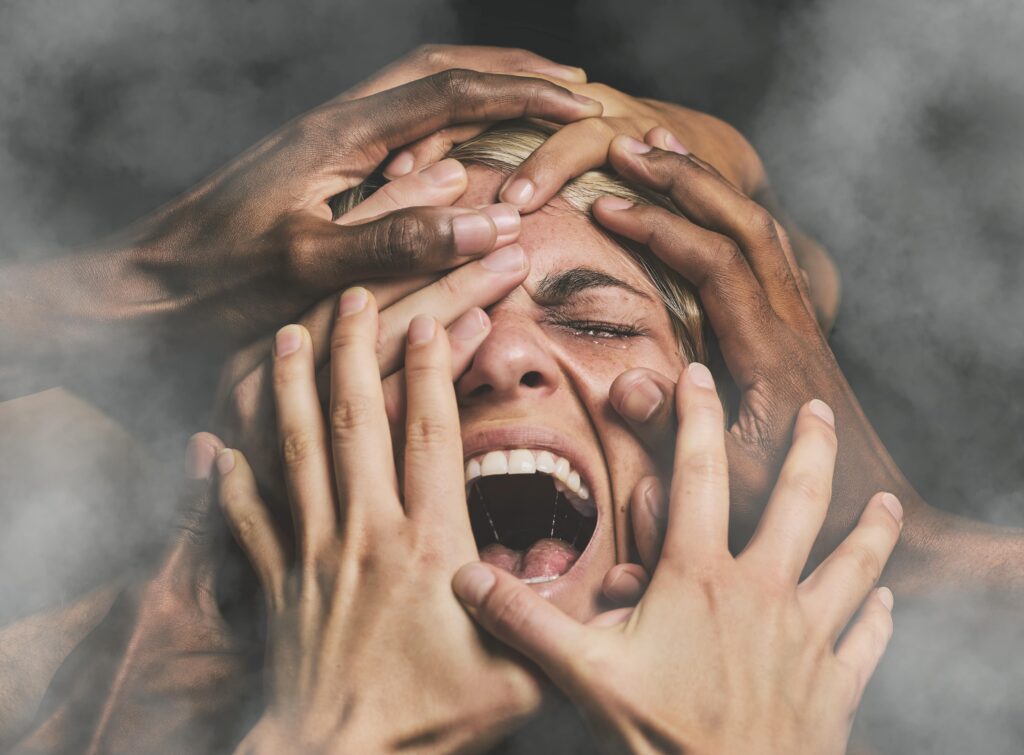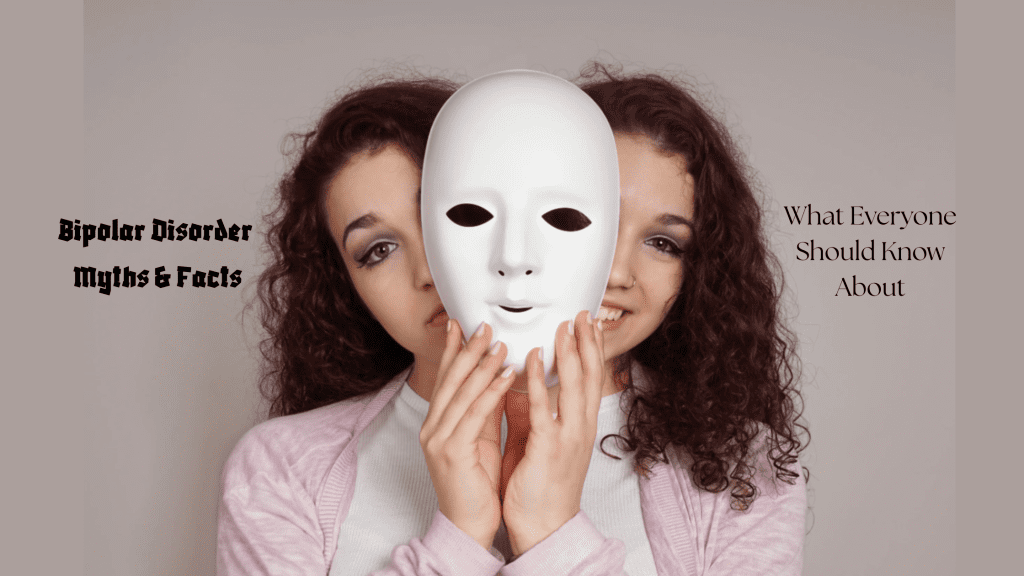The Difference Between Bipolar 1 and 2
The Difference Between Bipolar 1 and 2 Understanding the difference between bipolar 1 and bipolar 2 is important for those living with these conditions, their families, and anyone who wants to learn more about mental health. Many articles try to explain the differences between bipolar 1 and bipolar 2, but some can be confusing or overwhelming. At BP Harmony, we believe that these diagnoses should not be labels that define anyone forever. Instead, we talk about bipolar 1 and 2 as “acute phases,” meaning stages that people can move through, not permanent identities. We want to share both the science behind these terms and a more hopeful way to think about recovery and mental health. For more guidance on bipolar disorder, check out our book and masterclass to reclaim control of your life. You can also check out our free resources. Brief History of the Bipolar Diagnosis Written records of symptoms similar to what is termed bipolar disorder today have existed in medical texts since ancient times. This includes Ancient Greece and Persia. However, in 1952 the Diagnostic and Statistical Manual of Mental Disorders (DSM) coined the term “Manic-Depression”. This formed a conception that serves as the modern origin of bipolar today. In 1968, the diagnosis evolved to “Manic-Depressive Illness”. It was again changed to bipolar disorder in 1980. The 2023 version of the DSM has three diagnoses: Bipolar I disorder: diagnosed after one manic episode Bipolar II disorder: diagnosed after one depressive episode and one hypomanic episode Cyclothymic disorder: diagnosed after shifting between hypomania and depressive symptoms more frequently, and with less intensity, than in bipolar I or II disorders To better understand the differences, it helps to know how the DSM defines episodes. Manic episode: period of at least 1 week of extreme highs or irritability, in addition to other behavioral changes Hypomanic episode: less severe mania that need last at least 4 days Major depressive episode: period of at least 2 weeks with a set number of specific depression symptoms For a full breakdown of the history and understanding, search for a copy of the DSM-5 online. BP1 vs BP2: Breaking Down the Differences The Mayo Clinic offers a great chart that summarizes the DSM distinctions well. The BP Harmony Interpretation of BP1 and BP2 BP Harmony represents a collection of voices ranging from medical professionals, individuals with bipolar, and their families. A few observations must be stated: For the lay reader, texts on BP1 and BP2 can be misinterpreted. It is imperative to work with a licensed medical professional who is legally authorized to offer a diagnosis. There are no quantitative measures to determine if one has BP1, BP2 or any diagnosis at all. Notice the chart above does not have any measurements from typical markers such as the blood, saliva, urine, fecal matter, tissues, bones, etc. Rather, a diagnosis depends on the training, experience, and biases of the medical professional who simply observes the behaviors and reports of the patient. Hence, it is advisable to get a variety of opinions. Understanding the differences between BP1 and BP2 is useful to identify the stage of mental illness the individual is in and can help the individual craft a recovery plan with medical support, therapy, and mental health services like BP Harmony. However, the diagnoses are NOT the permanent station the person is stuck in forever. Individuals can receive a diagnosis of BP1 one year, BP2 another year, additional diagnoses another year, or even no mental health diagnoses in later years. In other words, one does not have to live with these labels forever. Modern Psychiatry uses these distinctions to decide which medication and dosages to give the patient. One must take precautions in accepting a diagnosis as they nearly always come with highly addictive drugs that harbor strong side effects. Moreover, psychiatrists receive little to no training on how to get individuals off safely. More posts related to this challenge are coming soon. In conclusion, The DSM is an important resource for anyone trying to understand bipolar; however, seeing that the diagnosis was coined only in 1980, there is much room to continue to evolve the understanding of bipolar from medical professionals, wellness leaders, and the people who have intimately lived the acute phases of BP1 and BP2 and found their way out. Recovery is possible. You can live a fill life again.










